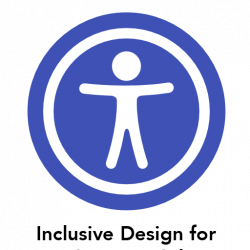What is Diabulimia? | Signs, Symptoms, Risk Factors & Treatment

Recovery from diabulimia (ED-DMT1) is possible with proper, compassionate support.
Individuals struggling with diabulimia need to know that diabetes management doesn’t have to revolve around weight loss or restriction.
What is Diabulimia?
The term “diabulimia” is used to describe co-occurring diabetes and eating disorders. Eating disorder-diabetes Mellitus type 1 (ED-DMT1) describes the dual diagnosis of a person struggling with eating disorders and type 1 diabetes. Individuals with diabulimia restrict insulin usage to control their weight and often experience negative body image.
While neither diabulimia nor ED-DMT1 are officially recognized diagnoses in the Diagnostic and Statistical Manual of Mental Disorders (DSM-V), the DSM does classify insulin omission as purging behavior. People with diabulimia may be diagnosed with Bulimia Nervosa if insulin manipulation is accompanied by binging, with Anorexia Nervosa if they restrict calories, or with OSFED (Other Specified Feeding and Eating Disorder) if symptoms do not meet diagnostic criteria for one specific eating disorder.
This article covers:
- What is Diabulimia?
- Diabulimia Symptoms
- Diabulimia Warning Signs
- Diabulimia Causes
- Diabulimia Health Risks
- Eating Disorders and Type 2 Diabetes
- Diabetes Awareness
- Diabulimia Treatment Team
- Diabulimia Treatment Programs
- Diabulimia Treatment Challenges
- Diabetes Stigma
- Diabulimia Helpline
- Diabulimia Resources
Diabulimia Symptoms
- Early-onset of diabetic medical complications: frequent infections (UTI, yeast, skin, Staph, etc.), deteriorating vision, gastroparesis, neuropathy, renal disease, and cardiovascular complications
- Consistently high hemoglobin A1c levels (range of blood sugars over a 3-month period)
- Frequently omit insulin at mealtimes despite multiple episodes of DKA
- Frequent urination
- Excessive thirst
- Excessive hunger
- Overlapping symptoms of eating disordered behaviors beyond insulin omission: restriction, binging, purging, use of laxatives, and over-exercising
- Extreme lethargy
- May be in normal body weight, larger body, or underweight (although prior to diagnosis of DMT1, it is common to lose weight)
Diabulimia Warning Signs
- Fear of taking insulin and insulin restriction
- Consistently high hemoglobin A1c
- Irregular eating patterns
- Avoidant of sweets and fats
- Gravitate towards “safe foods”
- Avoidant of meals/avoidant of eating around others
- Binges + feelings of guilt and fear of weight gain
- Limiting or omitting insulin
- Avoidant of doctor’s appointments/resistance to going to the endocrinologist or diabetologist
- Untruthful to doctors and family about blood glucose values
- Frequent visits to the emergency room for diabetic ketoacidosis (DKA)
- May voice body image concerns or body dissatisfaction
- May display an intense obsession with weight
- Secrecy and/or non-truths about diabetic management
Diabulimia Causes
When an individual is diagnosed with diabetes, there is an immediate and constant focus on controlling “numbers.” As a result, there is regular worry about their blood sugar numbers, carb counting, hemoglobin A1c levels, and insulin dosing–among others.
This focus on numbers and control can make it easy to fall into eating disorder behaviors, which are also based on numbers and control.
Diabulimia Health Risks
The health consequences of co-occurring eating disorders and diabetes are serious and can be life-threatening. The risk of death for diabulimia is 17 times more likely than type-1 diabetes alone, and seven times more likely than anorexia alone¹.
Clients with diabulimia may develop diabetic ketoacidosis (DKA), which occurs when the lack of insulin (common in clients with a new diagnosis of diabetes or in a client who is underdosing their insulin) prevents the body from utilizing glucose for fuel. Instead, the body breaks down fat in the liver and turns it into ketones. Ketones are acidic and cause a lowering of blood pH resulting in a state of acidosis. DKA typically presents with high blood glucose levels (over 250 mg/dL, although it’s usually much higher), acidosis, and ketones in the urine. Without proper treatment, DKA can result in a coma or death.
- Hyperglycemia (high blood sugar)
- Electrolyte imbalance
- Menstrual abnormalities in females
- Dehydration
- Gastroparesis
- Peripheral neuropathy (pain, weakness, or numbness in the extremities, such as hands, feet, arms, and legs)
- Impaired vision that can lead to blindness (retinopathy)
- Kidney disease that can lead to kidney failure (nephropathy)
- Heart disease and cardiovascular complications
- Stroke
Eating Disorders and Type 2 Diabetes
Type-2 diabetics also have an emphasis on the food they eat, are encouraged to count and restrict carbohydrates, keep their blood sugar levels down, and have an intense focus on numbers such as hemoglobin A1c. This focus on numbers and restrictive eating can lead to eating disorders such as anorexia, bulimia, binge eating disorder, or other specified feeding or eating disorder (OSFED), even if the person has not been prescribed insulin.
Most individuals with type-2 diabetes still produce insulin. However, their body develops insulin resistance, which means that it isn’t able to absorb and utilize insulin effectively. Over their disease course, type-2 diabetics may eventually be prescribed insulin to help their body process ingested carbohydrates. If they begin to manipulate their insulin dosage to influence weight, they may be diagnosed with a co-occurring eating disorder and require treatment for both conditions.
Diabetes Awareness
National Diabetes Month occurs every November (with World Diabetes Day on November 14). It serves as a time when organizations, advocates, individuals with diabetes, and their caregivers/loved ones can come together to educate their communities, drive research, and potentially save lives.
Statistics
- Diabulimia is shockingly common; as many as a third of women with type 1 diabetes report insulin restriction, with higher levels among those between the ages of 15 and 30.
- 37.3 million people have diabetes (11.3% of the US population)
- New cases: 1.4 million Americans are diagnosed with diabetes every year.
- The mortality rate for diabetes alone is roughly 2.5 percent; anorexia nervosa is 6.5 percent. Individuals with diabulimia face a mortality rate of 34 percent.
- The development of eating disorders is more common in those with DMT1 than in the general population. Women with DMT1 have nearly 2.5 times the risk of developing an eating disorder compared to those without diabetes.
Diabulimia Treatment
Treatment Team
Treating diabulimia clients requires a multi-disciplinary approach. Essential team members include:
- Endocrinologist or diabetologist who is sensitive to the psychological components of the eating disorder
- Registered dietitian and/or certified diabetes care and education specialist (CDCES) with experience with eating disorders
- Psychotherapist with experience with eating disorders.
- Nurse
- Medical doctor
- Psychiatrist
Each of these individuals needs to be collaborative and communicative when prescribing and treating someone with diabulimia. Scare tactics do not work, nor do guilt trips. Diabulimia clients benefit from programs focused on shame reduction with an emphasis on self-compassion.
Treatment Programs
It’s important to know that while not all treatment providers are equipped to provide care for diabulimia clients, some programs are able to accommodate those struggling with diabetes and co-occurring eating disorders. It’s also important to know that the treatment of diabetes in those with co-occurring eating disorders requires neither restriction nor weight loss.
Traditional diabetes management tends to rely primarily on restrictive, low-carb diets focused on weight loss. This approach is not only ineffective but dangerous for individuals with eating disorders, posing significant risks to their physical and mental health. Behavior stabilization and consistent nourishment are sufficient to manage diabetes in individuals with co-occurring eating disorders.
Some studies indicate that diabulimia clients have worse outcomes when treated in traditional outpatient settings. Higher levels of care may be advised for those needing ED-DMT1 treatment, but it depends on the individual.
Alsana offers enhanced programming based on our Adaptive Care Model that supports our integrative approach to care, assisting clients in our five dimensions as they journey toward wellness.
- On-site nursing 24/7 at all residential programs
- All staff at ED-DMT1 programs are specially trained in treating co-occurring eating disorders and diabetes
- Daily movement program
- Hands-on kitchen skills training
- Treatment of co-occurring conditions such as anxiety, depression, trauma, and substance abuse
- Focus on underlying issues and the functional aspects of the eating disorder
- Management of medical complications associated with diabetes
Treatment Challenges
All eating disorder treatment programs are challenging in their own way, and each individual has their own set of beliefs, traumas, and fears to untangle. Diabulimia clients face a unique set of challenges in treatment, all of them surmountable with support. If you or a loved one is struggling with eating disorders and co-occurring diabetes, it may help to know what to expect:
Body distress
During the first few weeks of stabilized eating and appropriate insulin injections, the regulation of clients’ blood sugar levels typically results in fluid retention. This means clients experience fast fluctuations in body weight, which can cause significant physical and emotional discomfort and anxiety related to this perceived loss of control.
Undoing mistrust
Entering treatment for an eating disorder can be quite a shock for clients with diabulimia, many of whom have been advised by medical professionals to restrict carbs and focus on weight loss. A whole-person, body-inclusive treatment approach may be met with skepticism at first.
Feeling “different”
Diabulimia clients typically require more medical touchpoints than their peers and have unique nutritional needs such as being required to read food labels. Making peace with individual recovery needs can be a challenging but worthwhile part of the process.
Constant carb counts
Because diabulimia clients must keep track of their carb intake, they – unlike their peers – are required to read food labels. When “life happens” in the form of last-minute menu changes, diabulimia clients may struggle more than others in their program to adapt. Most if not all eating disorder clients need help learning to embrace flexibility in recovery, but diabulimia clients may need extra
Diabetes Stigma and Other Care Access Barriers
Because of a general lack of awareness around mental illness, stigma represents a significant care-access barrier for many people struggling with eating disorders. Individuals with co-occurring diabetes may also experience diabetes and weight stigma, making it even more difficult to find care.
Diabetes stigma describes the negative attitudes, biases, judgments, and even prejudices directed toward people with diabetes. It can be experienced internally (self-blame and judgment) and externally (societal blame and judgment) and tends to be worse toward those living in larger bodies.
Weight stigma, also known as sizeism or weight bias, describes weight-based discriminatory behavior and biases toward people in larger bodies. Weight bias, unfortunately, is largely accepted as an acceptable form of discrimination due to the popular yet unfounded belief that people in thin bodies are healthy while those in larger bodies are not.
These internal and external stigmas – diabetes, weight, and mental illness -are not only psychologically damaging and woefully uninformed, but dangerous; people who are unable to overcome the internalized shame resulting from stigmatization may
- become avoidant to medical care
- be more likely to develop unhealthy coping mechanisms (such as binge eating or compensatory measures ie purging) – or develop a full-blown eating disorder
- self-isolate or feel unwelcome in places that could otherwise benefit their health
Stigma, shame, and blame have devastating psychological effects, take a toll on physical health, undermine mental health hygiene and preventative care, and make an already-steep uphill climb even steeper and more lonely. When speaking with someone with diabulimia, care providers and members of the individual’s support network must remember that their client and loved one is not a “diabetic” or a “diabulimic.” Rather, they are whole people beyond their diagnoses, and not defined by their weight or health status.
Working with the Diabulimia Helpline
At Alsana, we provide evidence-based diabulimia treatment for all our clients. We believe one of the foundational ways to provide such care is through staff education and training. To support this effort, Alsana provides all disciplines with internal training by our Chief Medical Officer, Chief Nursing Officer, Chief Clinical Officer, Vice President of Nutrition, and Vice President of Movement. In addition, Alsana has partnered with the Diabulimia Helpline to provide all our service lines supplemental training specific to eating disorders and DMT1. Our training spans from the admissions team to each discipline in the clinical team so that from the moment the client reaches out to Alsana, they are welcomed by staff familiar with their disorders and sensitive to their needs. Once they are admitted to our facility, each staff member from the direct care to the physician are trained and well-versed in the care and treatment of ED-DMT1.
If you have a client exhibiting signs of diabulimia, call us today or visit www.alsana.com/livechat to speak with one of our mental health professionals. We will discuss the level of care that is appropriate for your client and whether or not Alsana could be the healing place needed for your client. We look forward to hearing from you!
- Mortality in concurrent type 1 diabetes and anorexia nervosa. Nielsen S, Emborg C, Mølbak AG. Diabetes Care. 2002 Feb; 25(2):309-12.







